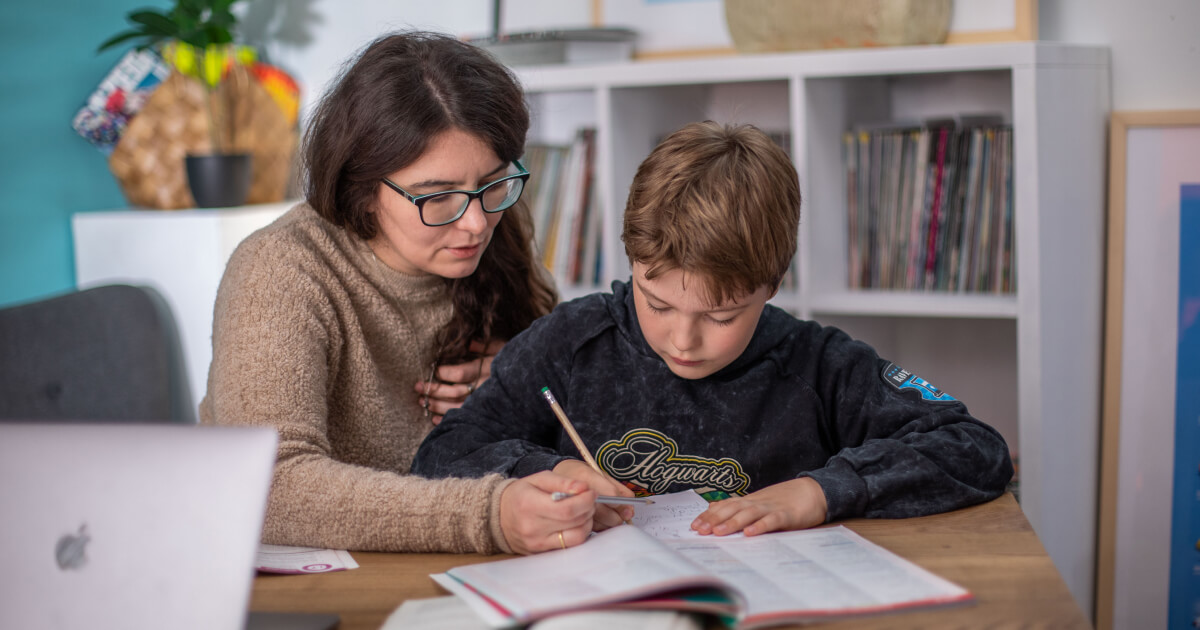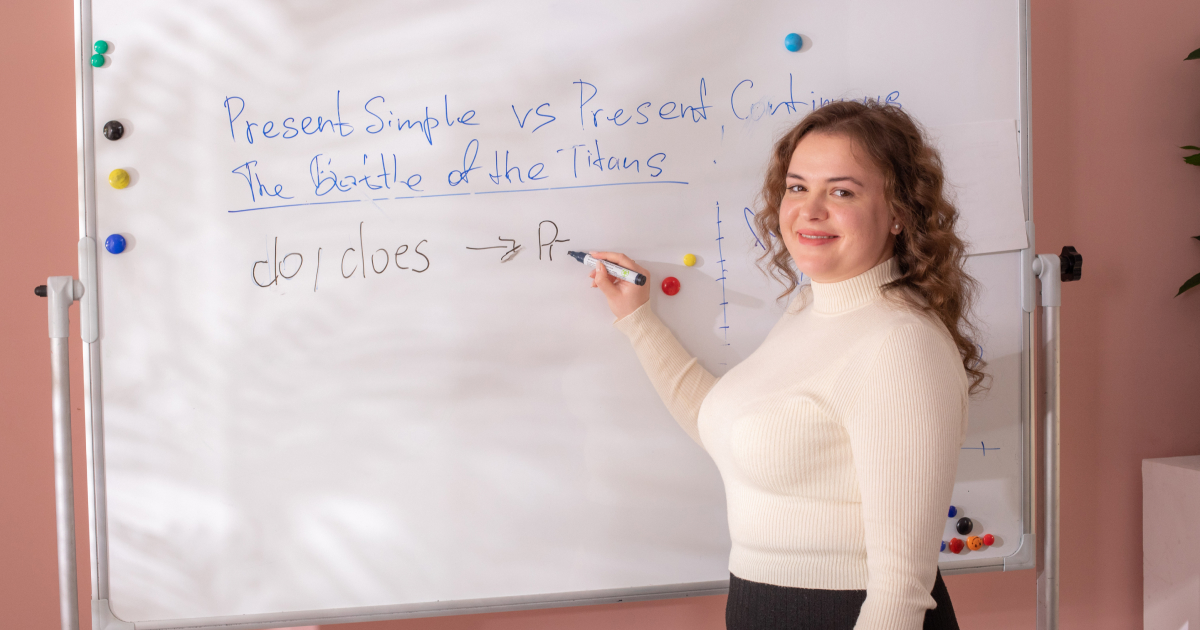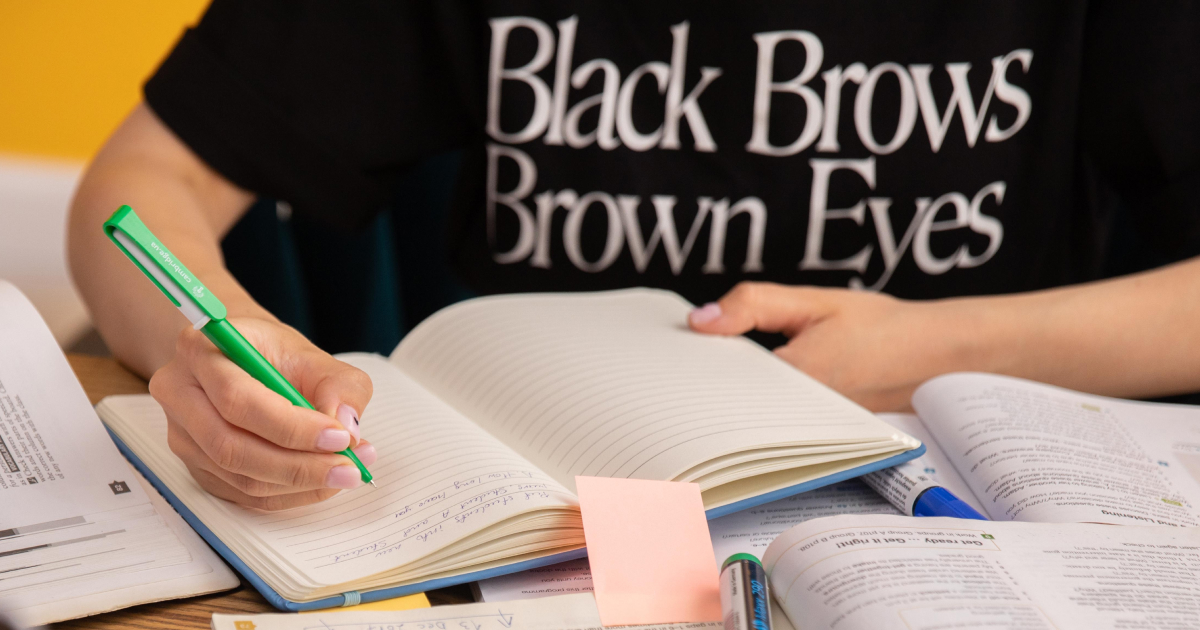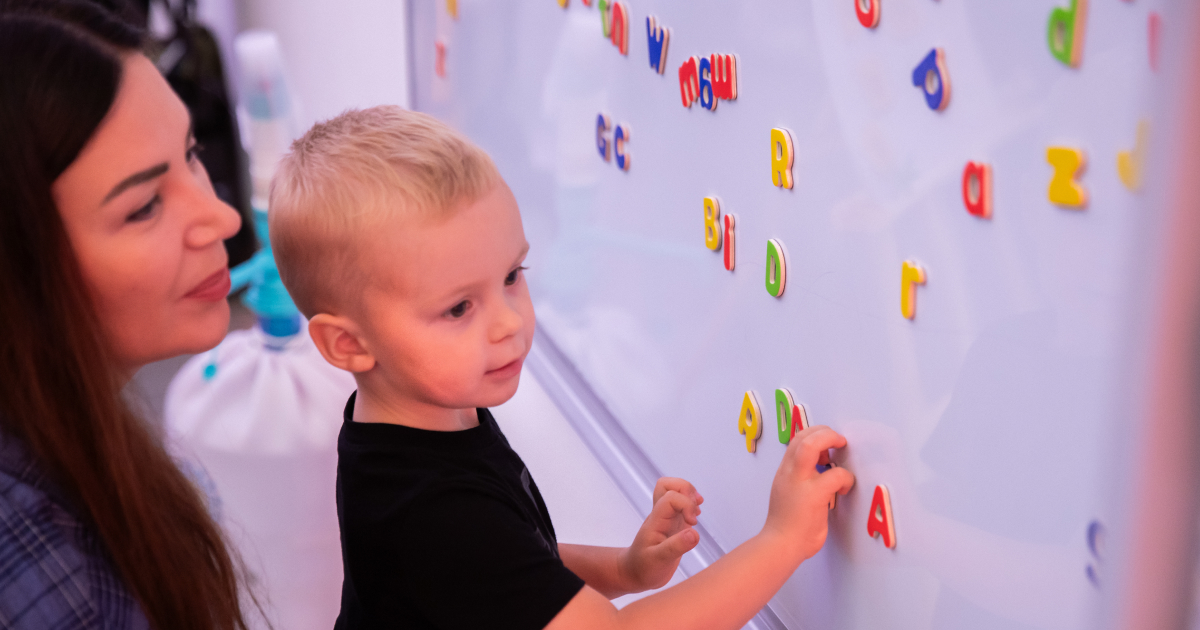Upgrading listening with the help of subtitles: how it works
- Listening
- Teaching qualifications
- Activities
- Tips & Strategies
- Methodology

07.11.2024
Teaching listening skills is probably one of the hardest parts of teaching a language.
It is much more difficult when you teach listening to young learners (YLs) in a non-English speaking environment.
With very little English exposure at home or in mainstream schools, YLs need careful guidance in their approach to listening, especially to authentic language.
Listening plays a key role in YLs' language development, simply because it is their primary source of speech samples and is a springboard for language acquisition and thus their future spoken production.
Listening is an active and interactional process, during which the listener perceives the sounds of speech and tries to give meaning to the spoken words.
This receptive skill improves listeners' ability to respond effectively to spoken communication by understanding the intended message of the spoken text.

Teach teenagers with confidence
Join our courseListening is one of the key language skills for young learners because it provides input for them.
Obviously, listening is the first skill that young students acquire (starting in preschool), as they begin to learn English by listening to different songs and words, and they can be basic for young students.
Listening leads to easier, faster, and better communication, learning, and interaction with each other.
Children with excellent listening skills communicate better and find it easier to understand more complex topics, and not just on an academic level.
Therefore, the importance of teaching YL listening is an important element in the development of interpersonal communication skills, interaction with peers and adults, building relationships, and developing the ability to hear and negotiate.
To support children with poor listening skills, it’s crucial for teachers to understand what hinders learners’ ability to listen and how to tailor a learning approach to address these issues and focus on the areas that need improvement.
Some students find it difficult to understand the language due to their limited vocabulary and lack of basic knowledge.
There may be students of different skill levels in that class, and those with limited vocabulary may struggle with listening comprehension.
7 best websites with listening tests
Excessive use of the same listening tasks and activities that require more attention and understanding can reduce YL's motivation to listen.
Unfamiliar vocabulary can also make YLs demotivated.
That is why it is important to introduce unfamiliar words to help them better understand the meaning, as well as to increase their interest and motivation to listen.
Overuse of L1 (native language) by the teacher becomes an obstacle on the way to improving listening skills.
The teacher's task is to provide students of all ages with an environment where they can think, speak, and listen to English with a natural accent.
Young students are easily distracted because they have a rather short attention span.
Since children are not able to concentrate on one task for a long time, it is desirable that the listening tasks or exercises are short, varied, and interesting.
Learning a foreign language includes not only the appropriate methods, the selection of materials, and the competence of the teacher, but also the learning environment.
If YLs find the learning environment uncomfortable for listening learning, this can have a negative impact on listening learning.
Therefore, the classroom should be quiet, and the teacher should respond calmly and understandingly if the student misheard some part of the exercise.

The activities below will help teachers not only make listening lessons interactive and fun but also help develop YLs' listening skills and make them attentive listeners.
One of the advantages of using songs and rhymes to develop listening skills is their rhythmic and patterned language.
There are many songs available for different age groups, and the benefit is that YLs can easily catch the rhythm and start singing along effortlessly.
Children have a keen awareness of rhythm.
Therefore, songs are considered to be an essential activity for teaching YLs.
When teaching listening using songs, an ESL teacher should take into account some tips:
Phrasal verbs games & activities for ESL
To get the students interested in the topic of the song and to warm them up, you can show a picture or other realia related to the song and ask the students what they think the song is about.
When working with YL, a teacher should understand that it is normal — and often necessary — for students to listen to the material more than twice.
During the first listening, students are simply getting acquainted with the listening material.
In order for students to better grasp the beat and music of the song, it is advisable to listen to it without pauses.
During the next listening session, the students should focus on the text, the teacher may pause the song to pre-teach some vocabulary and then the students should try to repeat the text together.
With each subsequent listening, the teacher's goal is to guide the students from point A to point B, where the students can sing the song on their own with almost no mistakes.

Common mistakes students make in the IELTS Listening section
Read nowSuch activities encourage students to listen carefully, concentrate, and follow instructions aiding their learning of colours, numbers, some prepositions, new words, and other components of language.
One of the good examples of such activities is ‘Listen and Draw’ or ‘Listen and Colour’ activity.
In this fun activity, YL will have to listen closely to a series of instructions about how to draw or colour specific things.
(Moreover, that'll improve children's fine motor skills at the same time).
For instance, while studying the topic "Parts of the body", children can draw a monster following the teacher's instructions (draw two round eyes, one pink nose, six hands with three fingers, etc.)
The instructions should be given step-by-step, and the teacher should read them out clearly and slowly, allowing children time to draw each stage.
The instructions are specific in relation to the colour, size, and space that children are meant to be drawing or drawing within, and by the time they’ve finished, they’ll have drawn their own masterpieces.
Once they’ve finished, they can compare their drawing with each other or with the model image (drawn by the teacher in advance).
This is a great way to assess their listening skills and see how closely they’re comprehending and following your instructions.
Upgrading listening with the help of subtitles
Simon Says is a great classic game that will sharpen YLs’ listening skills and attention to detail while having fun.
You can change the name "Simon" to any other name that is more appropriate for your young students.
The students' task is to listen carefully to the instructions and follow only those named by Simon, developing the ability to distinguish real commands from fake ones.
This game is great for learning new vocabulary, especially for learning verb expressions.
Have you ever considered that making crafts not only develops motor skills and creativity but can also help develop listening skills?
Craft activities are great for YL to follow instructions.
Students can watch a video tutorial or listen to your instructions.
Make sure you detail every step of the creative journey to improve their listening skills as well as their concentration and fine motor skills.
For example, make origami, draw pictures or Birthday cards, stick and glue different things and materials, or turn an ordinary toilet roll into a cute animal together with your learners.

Activities of this type are highly effective in developing vocabulary and grammatical awareness.
Introduce the vocabulary to YLs beforehand, then ask them to point to these things or show them to you as you name them.
Another engaging and educational task involves the learners looking at a picture along with a list of words.
As they listen to an audio recording or their teacher, they match the words they hear with the corresponding pictures, paying attention to whether all the words were mentioned or something was omitted.
One example of an effective activity is a task where students listen to the teacher or an audio recording and respond with "correct” or “wrong”.
The questions can cover any category or topic, allowing YLs not only to practice their listening skills but also to engage their logical thinking.
Additionally, the questions can refer to a certain image, requiring students to answer based on what they observe in the picture.
Another excellent example would be a role-playing game.
For instance, when studying the topic of food and shopping, YLs can be offered an activity where one of the students takes on the role of a shop assistant and another acts as a customer.
This activity teaches students to listen carefully to each other because in order to answer correctly and accurately, they need to understand what their partner is saying.

First lesson ideas, games, and activities for an English classroom
Find outTell the short story several times, but change the small details in it.
See if your YLs can spot the changes.
They can either notify you immediately if they think something has changed or write a list of changes down.
Similarly to the above, asking YLs to retell the story in a shortened version will aid in developing listening skills, since they have to focus on summarizing what you have said or read.
Choose a less popular children's rhyme or song that the wee ones are likely to not know yet.
Print the lyrics, but leave some of the words off.
Children need to fill these gaps as they listen to the pieces.

This activity is engaging because there is a competitive element of Bingo that motivates students to listen carefully and be fully involved.
Find or create appropriate bingo cards with pictures or words.
Call out the descriptions and the students mark the appropriate item on their card.
For example, when learning animals you can say "Find an animal that barks" and your YLs should quickly look at their cards and mark the dog or any other animal that you may mention.
Everyone is familiar with the game which will cheer up your students and improve their listening skills at the same time.
Whisper a simple sentence to one of your YLs, who then whispers that sentence to the next student, and so the YLs do it one by one.
When the sentence reaches the last student in the chain, they say the sentence out loud, and everyone compares it with the original.
The real fun comes as students eagerly watch to see how much the sentence has changed (or hasn’t) along the way.
No one wants to be the one who mishears and alters the sentence, so students concentrate and focus on listening accurately.
Kinesthetic teaching activities for ESL students
This activity provides an opportunity to test and reinforce YLs’ understanding of the structure of the story.
After listening to the story, students are given pictures or sentences from the story that they need to arrange in the correct order.
They can then try to retell the story using the pictures or sentences laid out.
So, as you have already noticed, listening doesn’t have to involve monotonous tasks, where students simply have to choose the correct option or answer questions.
There are numerous activities that will enhance not only listening skills but many other essential skills, important for YLs’ development.
By incorporating these diverse and enjoyable activities, you can achieve excellent results with your students, all while making the learning process enjoyable and effective.
Myroslava Khmelenko
Author
Teacher of General English
Comments
Leave your comment